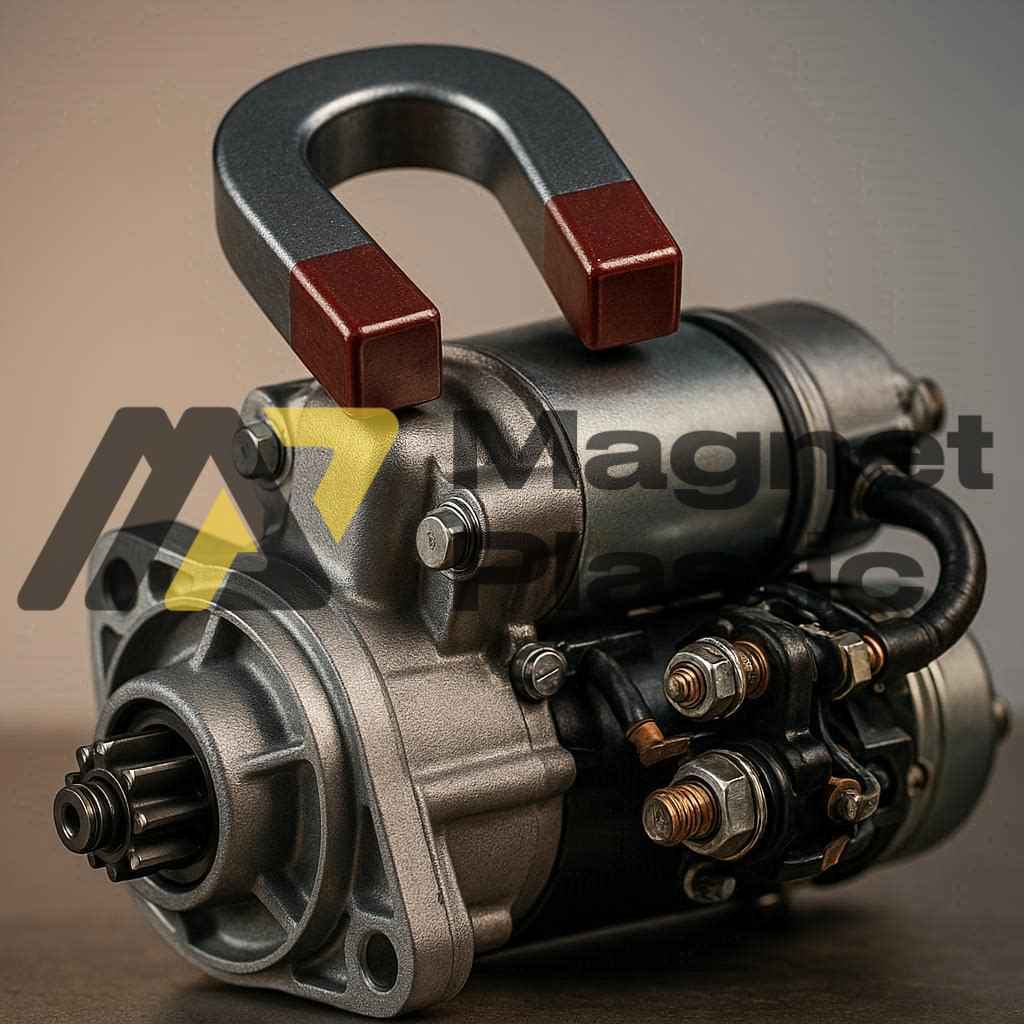Magnets Improve Efficiency in Automotive Applications
Magnets: A Key Component in the Automotive Industry
Magnets are essential components in the automotive sector, both inside vehicles and throughout the manufacturing process. Within vehicles, they enable systems such as power steering, electric windows, seatbelt sensors, and windshield wiper motors. On production lines, they facilitate the handling of metal parts, precise positioning, and process automation, resulting in greater efficiency and safety.
Magnetplastic designs, manufactures, and supplies magnets and magnetic assemblies that meet the highest standards of the automotive industry. We provide customized magnets with PPAP and PSW documentation, fully compliant with the IATF 16949 standard.
Main Applications of Magnets in Vehicles
Magnets play a crucial role in a wide range of automotive systems. Key applications include:
- Electric motors and starters
- Central locking systems
- Seatbelt and airbag sensors
- Audio and entertainment systems
- Electric power steering
- ABS braking systems
- Fuel injection systems
- Fuel and oil filtration
- Roof liner and interior compartment fastening
- Cargo cover magnets
- Antitheft systems and parking sensors
- Air conditioning components
These magnetic solutions enhance vehicle performance, safety, and comfort. As automotive technology advances—especially in hybrid and electric vehicles—the importance of permanent magnets continues to grow.
Innovation, Cost Savings, and Automation Through Magnets
The automotive industry has experienced continuous innovation, and magnets have been instrumental in this progress. Thanks to magnetic components, modern vehicles are more efficient, safer, and technologically advanced. Systems such as ABS, automatic transmissions, and parking sensors rely on magnets to automate mechanisms and improve precision.
Magnets also help reduce mechanical wear, optimize energy consumption, and lower maintenance costs. In manufacturing, they support the handling of metal parts, temporary fixation of components, and material transport, increasing productivity and assembly accuracy.
Simulation, Precision, and Quality Control
The development of magnets for automotive applications requires precision engineering and strict testing. Using finite element analysis (FEA), engineers can simulate the magnetic behavior of components before production—such as magnetic field depth or flux density on ferromagnetic parts. This allows them to optimize performance, shorten prototyping time, and develop the best solution for each specific application.
Magnetic measurements and quality control are also integral to the production process, in accordance with the IATF 16949 standard. These procedures ensure that every magnet meets the automotive industry’s high standards of safety, performance, and reliability.
